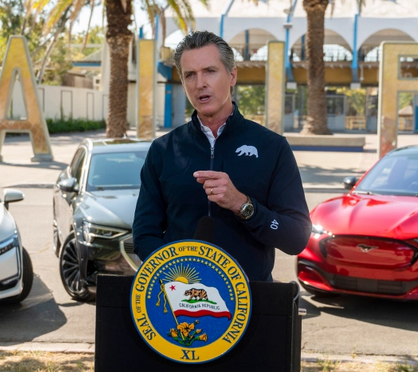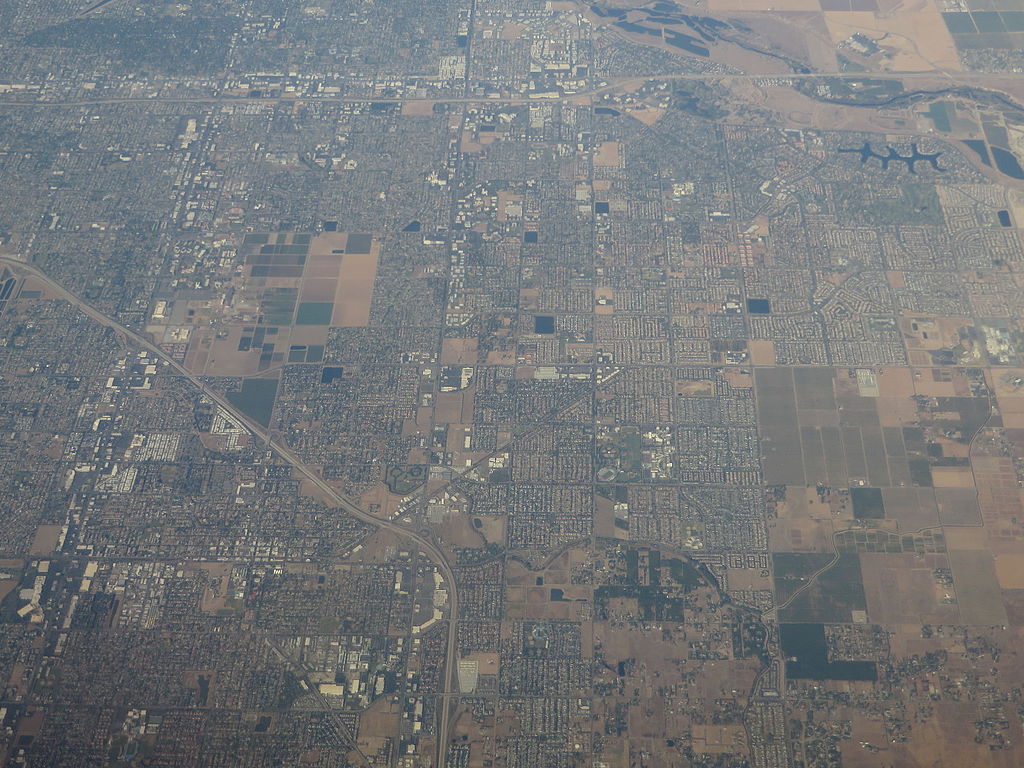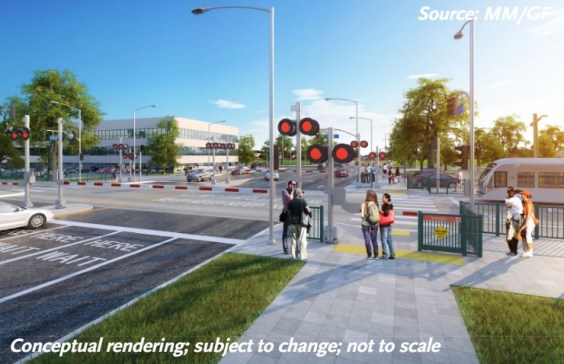Note: GJEL Accident Attorneys regularly sponsors coverage on Streetsblog San Francisco and Streetsblog California. Unless noted in the story, GJEL Accident Attorneys is not consulted for the content or editorial direction of the sponsored content.
Yesterday's hearing of the California Senate's Energy, Utilities, and Communications committee, chaired by Senator Steven Bradford, was nominally about Governor Newsom's proposal for preventing excessive profits going to oil companies - from out of the pockets of helpless California consumers. But it exposed how far even "experts" are from having a clear picture of what the state faces as California tries to move away from oil industry domination.
The hearing featured a few dramatic moments, with sniping between legislators and witnesses, some of it on topic. There was a fascinating but very wonky discussion of price caps and what they can and cannot do. And there was a passionate argument from the Center for Biological Diversity to punish oil companies, contrasting with calm, slippery testimony from the Western States Petroleum Association that firmly placed the blame for fuel price spikes on state policy.
Sort of what you'd expect, in other words.
The main takeaways from the hearing are that:
- There is no consensus (yet) on exactly what problem needs to be tackled
- There is no consensus on how best to proceed to solve the problem(s) or on what the potential consequences of proposed policies might be
- There is some consensus that the oil industry is unique in not providing adequate real-time data to government agencies, particularly about sales contracts and refinery inventories
- Price spikes and supply and demand mismatches are likely to grow worse over the next few decades as the oil industry wrings as much profit as it can and invests as little as possible in fixing problems it has caused, in the name of "good business"
- The legislature may not be up to the task - whatever that task may be.
Siva Gunda, a California Energy Commissioner, and Nick Maduras, Director at California Department of Tax and Fee Administration (CDTFA), described the general arc of the governor's proposal, which in its early, raw form would set a cap on oil company profits.
"The governor's proposal would set a maximum margin [on fuel prices] and impose a price gouging penalty," Maduras told the committee. "The maximum would be set to allow ordinary price fluctuations - that is, there would be no cap at all on normal profits."
"It's a unique proposal, and the proposed penalty would be on refineries," he said. "We are not trying to produce revenue [from fees], but to reduce margins" for the oil companies.
There have been three "unexplained" price spikes in the last few years - 2015, 2019, and again in 2021. Those years saw a spike in fuel prices in California that academics and government agencies studying the issues have not been able to identify a source for, even accounting for unique California taxes, fees, and fuel refining mix.
What is abundantly clear about those price spikes, as laid out by speaker after speaker, is that they "clearly fed large profits" for the oil companies, as Maduras put it.
Another provision in the proposal, also not yet fully laid out, would require regular assessments of the supply and price of transportation fuels in the state, including impacts on production of refinery maintenance and turnarounds on fuel supply and price. At the moment, again confirmed by almost every speaker at the hearing, such an assessment is not possible because the industry does not provide any of the relevant real-time data to allow such an assessment.
"The governor's proposal is to get us past guessing," said Maduras.
"One of our fundamental rules is to remain aware of energy trends so we can answer questions the legislature might have," said the CEC's Gunda. "Last year, we were not able to answer [why the price of gas was spiking], beyond a certain level.... We need real-time data and more disaggregated data. We don't know why inventory levels were so low last year. We can't answer the question, and we can't compel the industry to answer."
"We are equipped to process data, but we don't have it," he said.
Ross Brown of the Legislative Analyst Office put it to the committee members that to solve any problem, they are going to have to first define it clearly. Whatever policy choice they make will have unintended consequences, and they need to be prepared for that.
Brown outlined some of the questions the legislature will need to investigate. First, they need to find out where the price spikes are happening, and whether it is from supply and demand mismatches, as the oil industry claims, or because of limited competition and therefore prices go up just because they can. They will need to ascertain why prices in California are higher than the rest of the U.S. Part of that could be explained by higher taxes and environmental programs, but how much of the price difference is unexplained?
Then they will have to define what they mean by "excessive profits" and think about what their goals would be with any policy to control those. Is it to protect consumers? Punish the oil industry? What level of profit would be considered "excessive"? And how would any proposed policies affect consumers, as well as supply and price down the road?
Severin Borenstein, a UC academic researcher who has written extensively about gas prices and who came up with the term "mystery surcharge" to identify the unexplained 2019 price spike, said that while the exact cause is unclear, the sudden high prices did not correlate with wholesale prices.
"The refineries are not where the prices are spiking," he said. "If the problem is market power, a price gouging penalty could help. But if the problem is actually supply, [a penalty] could further reduce supply," thus exacerbating the problem. "It is hard to tell the difference, particularly in refining, where they have many inputs and many outputs."
The proposed policy "could help claw back profits, but could also disrupt the market; so we have to be cautious," he added.
"We are having these [price spikes] because we have a dying industry, and relatively little investment in capacity," said Jim Sweeney of the Stanford Institute for Economic Policy Research. "If we take away all the profit opportunity, then there's less incentive for the dying industry to maintain facilities, which could cause bigger and more frequent price spikes."
"There is a relatively low probability of making a difference, but also a long term probability of causing more problems" with a cap on profits, he said.
Then, showing just how twisted the entire conversation has become, he suggested that "the only reasonable option" to deal with price spikes would be to relax some environmental regulations to allow more competition from outside of the state. "That would mean a little environmental damage, but with lower prices," he said.
So the question may come down to that, even if your main concern is for your constituents, as Senator Dave Min said. What is more damaging to constituents: high prices or environmental damage beyond repair? Unlivable communities or having to shift expectations and lifestyle?
This was just the first airing of the governor's proposal. Expect conversations to continue.





